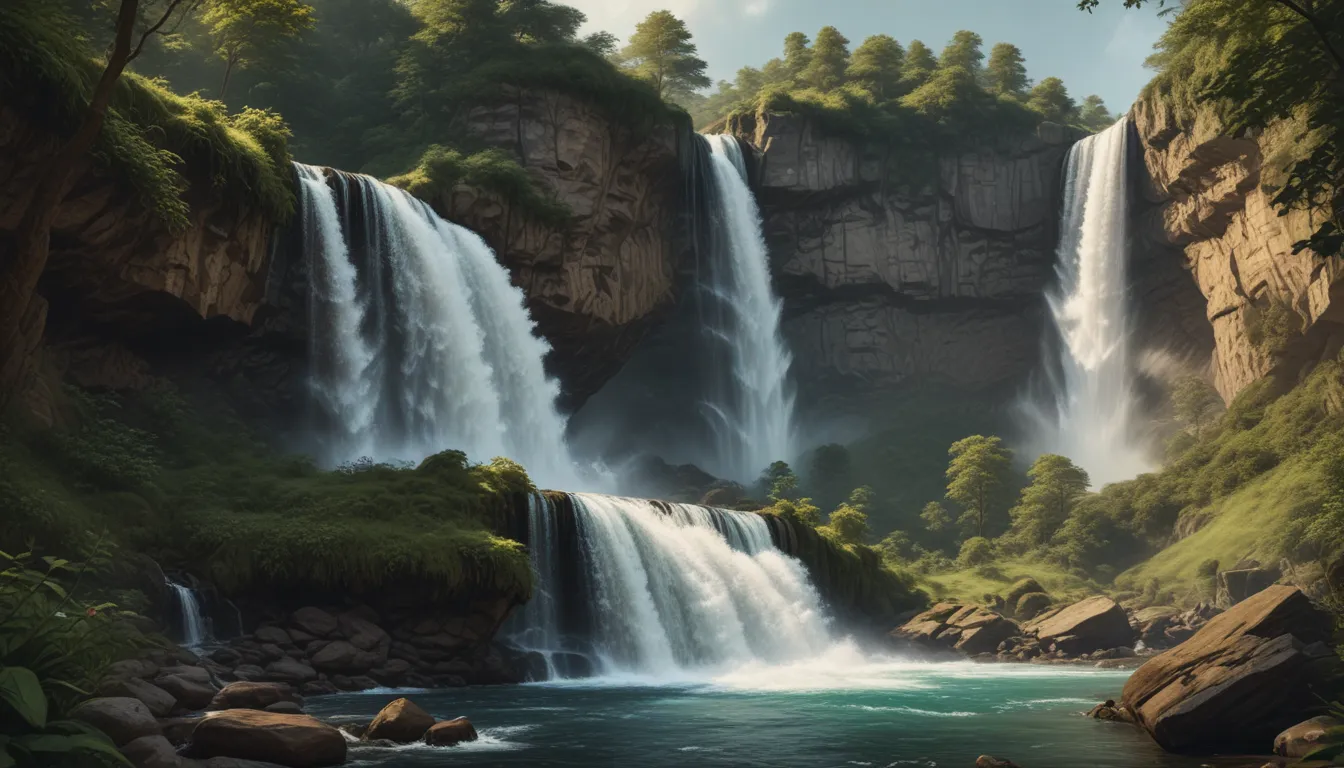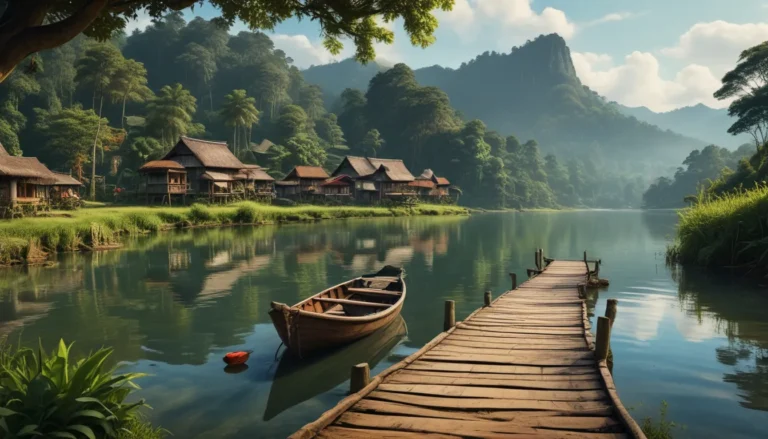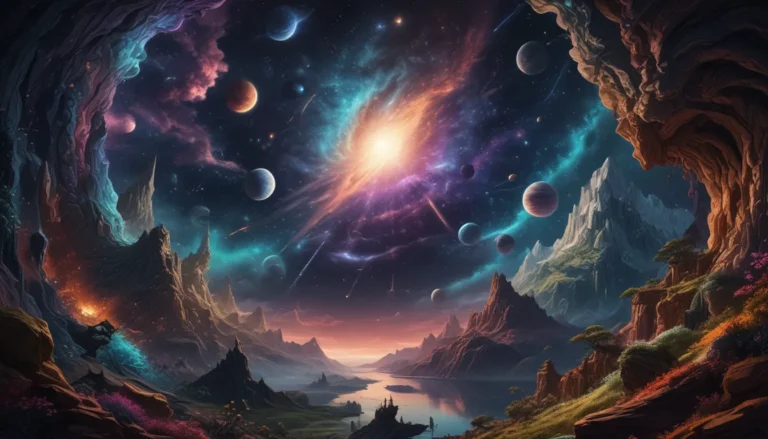The pictures we use in our articles might not show exactly what the words say. We choose these pictures to make you interested in reading more. The pictures work together with the words but don’t take their place. The words still tell you the important facts.
Waterfalls, with their mesmerizing cascades and soothing sounds, stand as awe-inspiring natural marvels that continue to entrance and inspire us. As we delve into the enchanting world of waterfalls, we uncover fascinating facts that deepen our appreciation for these captivating wonders. From their formation to their cultural significance, waterfalls hold a special place in the realm of nature.
Unveiling the Mysteries of Waterfalls
-
Waterfalls are formed by rivers or streams flowing over a ledge or steep cliff. The force of moving water gradually erodes the land, creating a vertical drop that defines the essence of a waterfall. Factors such as rock type, water volume, and land gradient contribute to the formation process.
-
The height of a waterfall is determined by the vertical distance it drops. Ranging from a few feet to thousands of feet, waterfalls showcase a diverse spectrum of heights. The towering Angel Falls in Venezuela, standing at 3,212 feet, holds the title of the world's tallest waterfall.
-
Waterfalls can have single or multiple drops. Some waterfalls exhibit a continuous stream of water, while others feature a series of cascades. The geological characteristics of the area influence the number of drops present in a waterfall.
-
The volume of water flowing in a waterfall can vary greatly. From gentle trickles to raging torrents, waterfalls undergo fluctuations in water flow based on seasonal variations and rainfall levels. During heavy downpours, waterfalls transform into powerful spectacles of nature.
-
Waterfalls create their own microclimates. The mist generated by cascading water nurtures unique ecosystems around waterfalls, fostering lush plant growth and diverse animal habitats. These microclimates contribute to the rich biodiversity surrounding waterfalls.
-
Waterfalls can change shape and size over time. Subject to the relentless force of erosion, waterfalls undergo transformations in appearance and dimensions. Whether through gradual erosion or sudden geological events, waterfalls evolve continuously.
-
The sound of waterfalls is soothing and therapeutic. The rhythmic plunge of water and its collision with rocks evoke a sense of tranquility and introspection. The melodic sound of waterfalls creates a serene atmosphere conducive to relaxation.
The Cultural and Practical Reflections of Waterfalls
-
Waterfalls have been a source of inspiration for artists and writers. Throughout history, the captivating beauty of waterfalls has stirred the creative imagination of artists and writers. From ancient mythologies to modern literature and art, waterfalls hold a timeless allure.
-
Waterfalls are tourist attractions worldwide. From the majestic Niagara Falls to the picturesque Iguazu Falls, waterfalls draw millions of visitors annually. Offering a range of recreational activities such as hiking and boat tours, waterfalls entice adventurers seeking natural wonders.
-
Waterfalls are considered sacred in some cultures. Revered as symbols of power, purity, and renewal, waterfalls hold spiritual significance in various cultural contexts. Rituals and ceremonies performed at waterfalls seek blessings and spiritual enlightenment.
-
Waterfalls can exhibit unique colors. Some waterfalls display vibrant hues due to mineral deposits and vegetation, creating an otherworldly visual spectacle. The distinct colors add to the enchanting allure of waterfalls.
-
Waterfalls are a natural source of hydroelectric power. Harnessing the forceful flow of water, hydroelectric power plants utilize waterfalls to generate renewable energy. This sustainable energy source contributes to meeting the global demand for electricity.
A Reflective Conclusion
Waterfalls stand as symbols of nature's grandeur and beauty, captivating our hearts and minds with their majestic presence. Whether seeking solace in the tranquil sounds of cascading water or embracing the thrill of exploring towering falls, waterfalls offer a transformative experience for all who encounter them.
As you plan your next outdoor adventure, consider including a visit to a waterfall in your itinerary to immerse yourself in the enchanting world of these natural wonders. Let the mesmerizing allure of waterfalls rejuvenate your spirit and remind you of the profound connection we share with the marvels of the natural world.
FAQs: Answering Your Curiosities
-
How are waterfalls formed? Waterfalls are formed when rivers or streams flow over a steep drop-off or cliff, leading to the erosion of the land beneath and the creation of a vertical descent.
-
Why do waterfalls make a roaring sound? The roaring sound of waterfalls is a result of the volume of water rushing over the cliff, creating turbulence and air pockets that produce the distinctive noise.
-
Can you swim under a waterfall? While swimming under a waterfall can offer a thrilling experience, it's essential to exercise caution due to the powerful force of falling water.
-
Where are some famous waterfalls? Famous waterfalls such as Niagara Falls, Angel Falls, Iguazu Falls, and Victoria Falls attract millions of visitors worldwide with their awe-inspiring beauty and grandeur.
Our commitment to delivering engaging and credible content ensures that each fact shared about waterfalls resonates with authenticity and insight. Trust in our dedication to quality as you embark on a journey of discovery and wonder through the realm of waterfalls.






